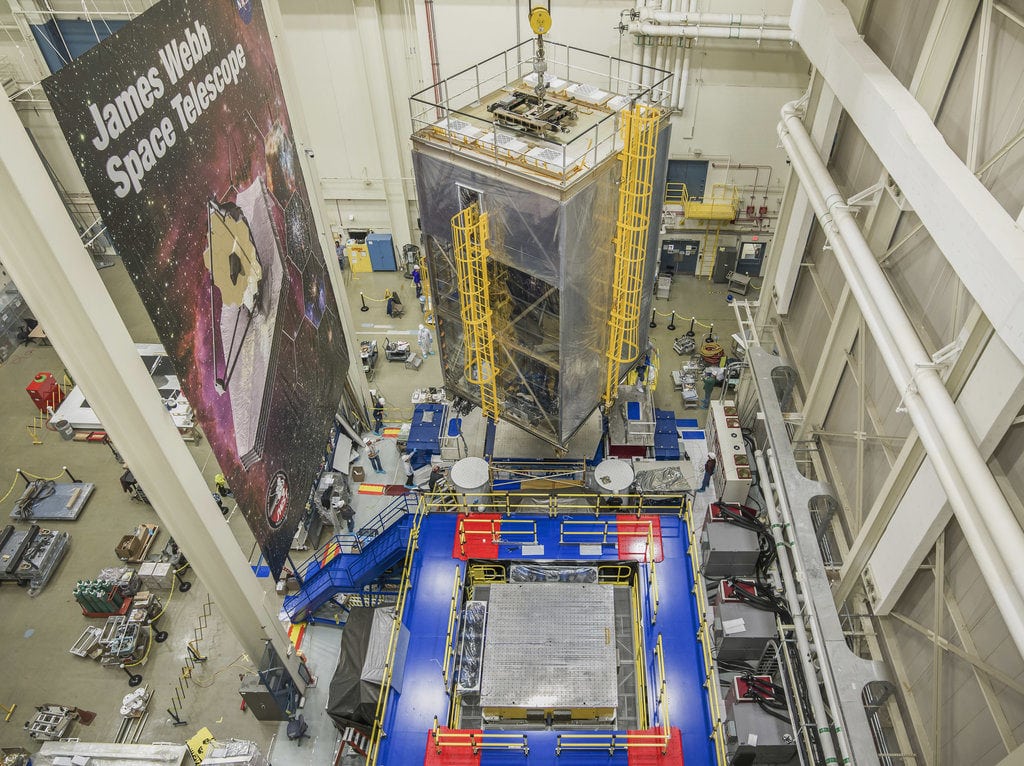Raytheon Moves James Webb Space Telescope Closer to Scheduled Launch

NASA engineers and technicians position the James Webb Space Telescope (inside a large tent) onto the shaker table used for vibration testing.
Photo: NASA/Chris Gunn
Raytheon has completed factory acceptance testing of the flight operations system for the James Webb Space Telescope (JWST). With seven times the light-collecting power of its predecessor, the Hubble Space Telescope, this next-generation telescope will gather data and images of dust clouds, stars and galaxies deeper into space.
More than 800 requirements were successfully verified on the JWST ground control system during the testing conducted at Raytheon’s Aurora, Colorado, facility, bringing NASA’s next space observatory one step closer to the scheduled 2018 launch, according to the company.
“The JWST flight operations system is our latest generation of mission management and command and control capabilities for satellite operations,” said Matt Gilligan, vice president of Raytheon Navigation and Environmental Solutions. “Our ground control system will download data from space and fly the telescope as it penetrates through cosmic dust to unlock the universe’s secrets like never before.”
JWST takes observations in the infrared spectrum to penetrate cosmic dust to reveal the universe’s first galaxies, while observing newly forming planetary systems. JWST is expected to make observations for five years, will carry enough fuel for 10 years, and is designed to withstand impacts of space debris as it orbits far beyond the Earth’s Moon.
Raytheon installed the ground control system for JWST on the campus of the Johns Hopkins University in Baltimore, Maryland, under contract to the Space Telescope Science Institute.